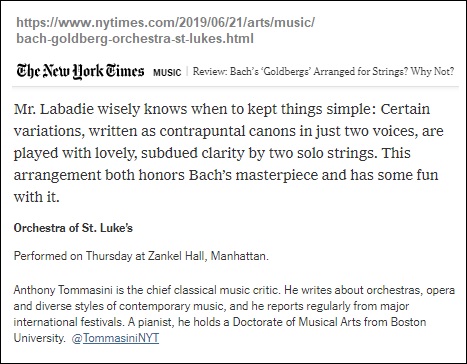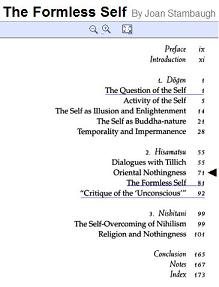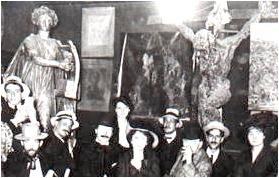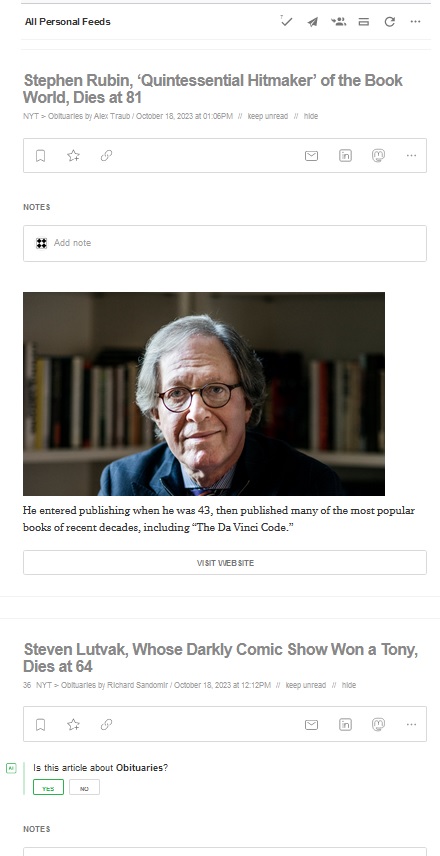
Wednesday, October 18, 2023
Wednesday, June 22, 2022
Code Wars: “Use the Source, Luke.”
Click the above galaxy for a larger image.
"O God, I could be bounded in a nutshell
and count myself a king of infinite space,
were it not that I have bad dreams." — Hamlet
Battle of the Nutshells —
From a much larger nutshell
on the above code date—
Monday, October 18, 2021
Star Logo for the Feast of St. Luke (Skywalker)

See Leiber in this journal.
Saturday, July 3, 2021
Friday, October 23, 2020
News from Saint Luke’s Day
Midrash for the late Harold Bloom,
author of The Daemon Knows —

It is perhaps not irrelevant that the phrase "on Saturday" in the
Los Angeles Times of Sunday, October 18, 2020, refers to the
preceding day — October 17, 2020. See too that date here.
Related material —
— November 2020
Notices of the American Mathematical Society
For fans of mathematics and narrative —
Some may fancy Bloom as a dybbuk (cf, "A Serious Man") turning
the page in the article above to the next page, 1590 —
Friday, October 18, 2019
A Song for St. Luke’s Day
From a 1962 young-adult novel —
"There's something phoney in the whole setup, Meg thought.
There is definitely something rotten in the state of Camazotz."
Song adapted from a 1960 musical —
"In short, there's simply not
A more congenial spot
For happy-ever-aftering
Than here in Camazotz!"
Sunday, June 3, 2018
“Use the Source, Luke”
Wednesday, October 18, 2017
Dürer for St. Luke’s Day
Structure of the Dürer magic square
16 3 2 13
5 10 11 8 decreased by 1 is …
9 6 7 12
4 15 14 1
15 2 1 12
4 9 10 7
8 5 6 11
3 14 13 0 .
Base 4 —
33 02 01 30
10 21 22 13
20 11 12 23
03 32 31 00 .
Two-part decomposition of base-4 array
as two (non-Latin) orthogonal arrays —
3 0 0 3 3 2 1 0
1 2 2 1 0 1 2 3
2 1 1 2 0 1 2 3
0 3 3 0 3 2 1 0 .
Base 2 –
1111 0010 0001 1100
0100 1001 1010 0111
1000 0101 0110 1011
0011 1110 1101 0000 .
Four-part decomposition of base-2 array
as four affine hyperplanes over GF(2) —
1001 1001 1100 1010
0110 1001 0011 0101
1001 0110 0011 0101
0110 0110 1100 1010 .
— Steven H. Cullinane,
October 18, 2017
See also recent related analyses of
noted 3×3 and 5×5 magic squares.
Tuesday, October 18, 2016
Tuesday, June 28, 2016
“Use ‘The Source,’ Luke”
See Source + Michener and The Source (Dec. 29, 2014).
Thursday, October 18, 2012
A Story for St. Luke
"When Death tells a story,
you really have to listen."
— The Book Thief (cover)
Monday, October 18, 2010
For St. Luke’s Day —
The Turning
"To everything, turn, turn, turn…
… there is a season, turn, turn, turn…"
For less turning and more seasons, see a search in this journal for
fullness + multitude + "cold mountain."
Sunday, October 18, 2009
ART WARS for the Feast of St. Luke
A Sermon from Christchurch
in The New York Times
Related material:
Wednesday, March 20, 2024
Menacing Mirrors

The above cultural comment is by Adam Gopnik,
the author of the novel The King in the Window .
|
An alternative to The Snow Queen On The King in the Window , by Adam Gopnik —
"The book is dedicated to Adam Gopnik's son,
'A fantasy that is as ambitious in theme,
The unlikely eponymous hero is Oliver Parker,
His enemy is the dreaded Master of Mirrors,
Oliver's mission is to defeat the Master of Mirrors — Description at https://biblio.co.nz/. . . . |
See also the menacing quantum computer (or "quamputer")
in Black Mirror — "Joan Is Awful" (June 15, 2023).

Sunday, October 30, 2022
Rethinking October 18th
The New York Times today reported a death on October 18th,
the Feast of St. Luke.

See also Luke in this journal. Some will prefer Cool Hand Luke to
the alleged gospel author.
Wednesday, October 20, 2021
Academic Elegy
"On September 2, 2020, at the age of 59,
David Graeber died of necrotizing pancreatitis
while on vacation in Venice. The news hit me
like a blow. How many books have we lost,
I thought, that will never get written now?
How many insights, how much wisdom,
will remain forever unexpressed? The appearance of
The Dawn of Everything: A New History of Humanity
is thus bittersweet, at once a final, unexpected gift
and a reminder of what might have been."
— William Deresiewicz
This is from The Atlantic on St. Luke's Day, 2021.
Note the article's illustration, and related material from
this journal on the date of the death described above:
Sunday, August 1, 2021
Old Joke
"Can you imagine the mathematical possibilities?"
— Line from "Annie Hall"
Related joke —

The Catherine Hardwicke version —
More fun . . . A 26-year old Cara Delevingne.
Monday, July 12, 2021
Educational Series
Friday, November 6, 2020
Breadcrumbs
“keywords”:
[“Donald Trump”,”conspiracy theory”,”qanon”],
“datePublished”:
“2020-09-29T16:56:00+0000”,
“dateModified”:
“2020-10-18T15:01:55+0000”
— CBS News … “Use The Source , Luke.”
“Black velvet in that little boy’s smile”
Wednesday, November 4, 2020
The Summerfield Prize . . .
The author of A Piece of Justice , a 1995 novel about mathematics
and quilts, has died.

Walsh died on St. Luke's Day. Cf. Luke in this journal.
Tuesday, November 3, 2020
Notes towards the Redefinition of Culture
An online newspaper page dated Nov. 2, All Souls' Day,
displays a story from Tuesday, Oct. 20, about an upcoming
religious event at a church named for Saint Luke.
Luke's feast day was October 18, the date of death for
a Hollywood publicist —
A gong show I prefer to the above church version —

Saturday, June 22, 2019
Wednesday, November 29, 2017
Monday, November 13, 2017
Plan 9 at Yale
Yale Professors Race Google and IBM to the First Quantum Computer
"So, after summer, in the autumn air,
Comes the cold volume* of forgotten ghosts,
But soothingly, with pleasant instruments,
So that this cold, a children's tale of ice,
Seems like a sheen of heat romanticized."
— Wallace Stevens,
"An Ordinary Evening in New Haven"
* Update of 10:20 the same evening:
|
An alternative to The Snow Queen On The King in the Window , by Adam Gopnik —
"The book is dedicated to Adam Gopnik's son,
'A fantasy that is as ambitious in theme,
The unlikely eponymous hero is Oliver Parker,
His enemy is the dreaded Master of Mirrors,
Oliver's mission is to defeat the Master of Mirrors — Description at https://biblio.co.nz/. . . . |
Friday, October 20, 2017
Heart of the Monkey God
In Memoriam
"Renowned Canadian theologian Gregory Baum, 94,
author of the first draft of the Second Vatican Council's
'Nostra Aetate,' died Oct. 18 in a Montreal hospital."
— National Catholic Reporter , Oct. 20, 2017
October 18 was St. Luke's Day.
From the Log24 post "Prose" on that date —
"Mister Monkey . . . . is also Hanuman, the Hindu monkey god . . . ."
— Cathleeen Schine in an online October 17 NY Times review.
From the novel under review —
"Only the heart of the monkey god is large enough
to contain the hearts and souls of all the monkeys,
all the humans, the gods, every shining thread
that connects them."
— Francine Prose, Mister Monkey: A Novel (p. 263).
HarperCollins. Kindle Edition.
See as well all posts now tagged Prose Monkey.
Wednesday, November 30, 2016
In Nuce
|
Excerpts from James C. Nohrnberg, "The Master of the Myth of Literature: An Interpenetrative Ogdoad for Northrop Frye," Comparative Literature Vol. 53, No. 1 (Winter, 2001), pp. 58-82
From page 58 — * P. 22 of Rereading Frye: The Published and Unpublished Works , ed. David Boyd and Imre Salusinszky, Frye Studies [series] (Toronto: University of Toronto Press, 1998). [Abbreviated as RF .]
From page 62 —
From page 63 —
From page 69 —
From page 71 —
From page 77 — |
Friday, October 16, 2015
Death on Columbus Day
See as well a meditation by Lorrie Moore quoted here
on the feast of St. Luke in 2003.
Related thoughts: Log24 on Columbus Day, and Plan 9.
Saturday, September 12, 2015
Ledger
Lorrie Moore, in the current New York Review of Books ,
on a detective in a TV series:
He "takes notes in a large ledger and
speaks as if he were the CEO of
a nihilist fortune cookie company."
— "Sympathy for the Devil," NYRB
issue dated Sept. 24, 2015
See Harvard president Drew Faust as such a CEO.
|
UPDATED: September 12, 2015, at 4:22 pm.
Luke Z. Tang ’18, a Lowell House sophomore,
Local authorities are investigating the cause |
Wednesday, May 20, 2015
Real Life
From the Milwaukee Journal Sentinel Tuesday afternoon —
A 46-year-old Jesuit priest who was a Marquette University
assistant professor of theology collapsed on campus
Tuesday morning and died, President Michael Lovell
announced to the campus community in an email….
"Rev. Lúcás (Yiu Sing Luke) Chan, S.J., died after
collapsing this morning in Marquette Hall. Just last Sunday,
Father Chan offered the invocation at the Klingler College
of Arts and Sciences graduation ceremony…."
Synchronicity check…
From this journal on the above publication date of
Chan's book — Sept. 20, 2012 —

From a Log24 post on the preceding day, Sept. 19, 2012 —
“The Game in the Ship cannot be approached as a job,
a vocation, a career, or a recreation. To the contrary,
it is Life and Death itself at work there. In the Inner Game,
we call the Game Dhum Welur , the Mind of God."
— The Gameplayers of Zan
Friday, April 17, 2015
For Story Time
A book first published by Doubleday in 1979:
From Fritz Leiber's 1959 sci-fi classic "Damnation Morning" —
She drew from her handbag a pale grey
gleaming implement that looked by quick turns
to me like a knife, a gun, a slim sceptre, and a
delicate branding iron— especially when its tip
sprouted an eight-limbed star of silver wire.
“The test?” I faltered, staring at the thing.
“Yes, to determine whether you can live in the
fourth dimension or only die in it.”
See also Philanthropic Numerology (St. Luke's Day, 2012).
Tuesday, March 4, 2014
The Crimson Passion…
Sunday, October 21, 2012
On the Cusp
Thursday, October 18, 2012
Philanthropic Numerology
For St. Luke's Day
In memory of a philanthropist
who reportedly died last Sunday—
Part I— A safe deposit box number from
the 2006 Denzel Washington film "Inside Man"—

Part II—A related occurrence of the same number in
the Catechism of the Catholic Church.
Part III— The 1998 Denzel Washington film "Fallen."
Part IV— The works of Octavia Butler…
in particular, the character Doro in Wild Seed (1980)
and Mind of My Mind (1977).
Kirkus Reviews on the 1977 novel—
"Butler is clearly on to a promising vein—
something like Zenna Henderson's 'People' stories
without their saccharine silliness."
Friday, April 13, 2012
Askew Crews
| A Large & Startling Figure: The Harry Crews Online Bibliography www.harrycrews.org/Features/News/index.html Page updated: March 29, 2012, 08:16 PM Copyright © 1998 – 2010 |
The "large and startling" phrase is from Flannery O'Connor—
|
From Georgia College, Milledgeville, GA— … in Flannery O'Connor's essay "The Fiction Writer and His Country"… she explains why she writes the way she does: "When you can assume that your audience holds the same beliefs you do, you can relax a little and use more normal means of talking to it; when you have to assume that it does not, then you have to make your vision apparent by shock— to the hard of hearing you shout, and for the almost-blind you draw large and startling figures" (Mystery and Manners , p. 34). |
For a large and startling figure played by Askew, see a scene from "Big Love."

Saturday, March 3, 2012
Big Art
For Women's History Month—
The Beam of Pink Light
From a post linked to on Lyxe's upload date, Feb. 6, 2012—
“… with primitives the beginnings of art, science, and religion
coalesce in the undifferentiated chaos of the magical mentality….”
— Carl G. Jung, “On the Relation of Analytical Psychology to Poetry,”
Collected Works, Vol. 15, The Spirit in Man, Art, and Literature,
Princeton University Press, 1966, excerpted in
Twentieth Century Theories of Art, edited by James M. Thompson.
See also the NY Lottery for St. Luke's Day, 2011, publication date
of the new edition of Philip K. Dick's VALIS quoted above.
Wednesday, October 19, 2011
Shine On
"There is work to be done
in the dark before dawn."
Log24 posts suggested by the New York Lottery
yesterday (the Feast of Saint Luke) —
Saturday, January 1, 2011
Christchurch Philosophy
In memory of Denis Dutton, a professor of philosophy at Canterbury University in Christchurch, New Zealand, who reportedly died in Christchurch on Tuesday, December 28, 2010. (This date presumably refers to New Zealand Daylight Time, 18 hours ahead of Eastern Standard time; both U.S. and New Zealand sources say Dutton died on Dec. 28.)
The New York Times reports his death today —
"A version of this article appeared in print on January 1, 2011, on page A17 of the New York edition."
Dutton's academic specialty was the philosophy of art.
For some remarks on philosophy and on art from the day of Dutton's death, see "Church Diamond" in this journal, 3:09 PM EST December 27 (9:09 AM December 28, New Zealand Daylight Time).
See also Dutton's essay "Has Conceptual Art Jumped the Shark Tank?" that was linked to here on St. Luke's Day, 2009.
For some context, see the recent Log24 posts Dry Bones and Canterbury Tale.
Friday, July 31, 2009
Friday July 31, 2009
| ALLURE |
at The New York Times.
For previous notes on
allure at the Times, see
St. Luke’s Day, 2008,
and its links.
Teaser at the top of
this afternoon’s Times’s
online front page:
“Vampires Never Die:
In our fast-paced society,
eternity has a special
allure.” (With fanged
illustration)–

Yesterday’s afternoon entry was
related to both the July 13th death
of avant-garde artist Dash Snow
and the beauty of Suzanne Vega.
A reference to Vega’s album
“Beauty & Crime” apppeared here
on the date of Snow’s death.
(See “Terrible End for an
Enfant Terrible,” NY Times,
story dated July 24.)
The Vega entry yesterday was, in
part, a reference to that context.

In view of today’s Times
teaser, the large picture of
Vega shown here yesterday
(a detail of the above cover)
seems less an image of
pure beauty than of, well,
a lure… specifically, a
vampire lure:

What healthy vampire
could resist that neck?
To me, the key words in the
Times teaser are “allure”
(discussed above) and “eternity.”
For both allure and eternity
in the same picture
(with interpretive
symbols added above)
see this journal on
January 31, 2008:


This image from “Black Narcissus”
casts Jean Simmons as Allure
and Deborah Kerr, in a pretty
contrast, as Eternity.
For different approaches to
these concepts, see Simmons
and Kerr in other films,
notably those co-starring
Burt Lancaster.
Lancaster seems to have had
a pretty good grasp of Allure
in his films with Simmons
and Kerr. For Eternity, see
“Rocket Gibraltar” and
“Field of Dreams.”
For less heterosexual approaches
to these concepts, see the
continuing culture coverage of
the Times— for instance, the
vampire essay above and the
Times‘s remarks Monday on
choreographer Merce Cunningham–
who always reminded me of
Carmen Ghia in “The Producers”–

Related material:
“Dance of the Vampires”
in “At the Still Point”
(this journal, 1/16/03).
Monday, February 9, 2009
Monday February 9, 2009
The British Academy Awards last night showed two Paul Newman clips:
"Sometimes nothin' can be a real cool hand."
"Boy, I got vision and the rest of the world wears bifocals."
Related material: This journal, September 2008.
 Pennsylvania Lottery 
|
|
Friday, November 7, 2008
Friday November 7, 2008
An example of lifestyle coverage at The New York Times— a 2006 story on visual art in Mexico that included a reference to…
For descriptions of such life, I prefer the literary art of Robert Stone– in particular, Stone’s novel A Flag for Sunrise.
Credit must be given to the Times for an excellent 1981 review of that novel.
The review’s conclusion:
“A Flag for Sunrise is
the best novel of ideas
I’ve read since Dostoyevsky
escaped from Omsk.”
The author of that review, John Leonard, died Wednesday, Nov. 5. This morning’s Times has his obituary.
Monday, October 20, 2008
Monday October 20, 2008
Thoughts suggested by Saturday's entry–
"… with primitives the beginnings of art, science, and religion coalesce in the undifferentiated chaos of the magical mentality…."
— Carl G. Jung, "On the Relation of Analytical Psychology to Poetry," Collected Works, Vol. 15, The Spirit in Man, Art, and Literature, Princeton University Press, 1966, excerpted in Twentieth Century Theories of Art, edited by James M. Thompson.
For a video of such undifferentiated chaos, see the Four Tops' "Loco in Acapulco."
"Yes, you'll be goin' loco
down in Acapulco,
the magic down there
is so strong."
This song is from the 1988 film "Buster."
(For a related religious use of that name– "Look, Buster, do you want to live?"– see Fritz Leiber's "Damnation Morning," quoted here on Sept. 28.)
Art, science, and religion are not apparent within the undifferentiated chaos of the Four Tops' Acapulco video, which appears to incorporate time travel in its cross-cutting of scenes that seem to be from the Mexican revolution with contemporary pool-party scenes. Art, science, and religion do, however, appear within my own memories of Acapulco. While staying at a small thatched-roof hostel on a beach at Acapulco in the early 1960's, I read a paperback edition of Three Philosophical Poets, a book by George Santayana on Lucretius, Dante, and Goethe. Here we may regard art as represented by Goethe, science by Lucretius, and religion by Dante. For a more recent and personal combination of these topics, see Juneteenth through Midsummer Night, 2007, which also has references to the "primitives" and "magical mentality" discussed by Jung.
"The major structures of the psyche for Jung include the ego, which is comprised of the persona and the shadow. The persona is the 'mask' which the person presents [to] the world, while the shadow holds the parts of the self which the person feels ashamed and guilty about."
— Brent Dean Robbins, Jung page at Mythos & Logos
As for shame and guilt, see Malcolm Lowry's classic Under the Volcano, a novel dealing not with Acapulco but with a part of Mexico where in my youth I spent much more time– Cuernavaca.
Lest Lowry's reflections prove too depressing, I recommend as background music the jazz piano of the late Dave McKenna… in particular, "Me and My Shadow."
McKenna died on Saturday, the date of the entry that included "Loco in Acapulco." Saturday was also the Feast of Saint Luke.
Tuesday, September 30, 2008
Tuesday September 30, 2008
| Hole in the Wall
Loren Eiseley, I never found — “The Invisible Horseman” This quotation is the result of On Michaelmas 2008 (yesterday): The mailman brought next Sunday’s New York Times Book Review. On the last page was an essay by Steven Millhauser, “The Ambition of the Short Story.” It said that… “The short story concentrates on its grain of sand, in the fierce belief that there– right there, in the palm of its hand– lies the universe. It seeks to know that grain of sand the way a lover seeks to know the face of the beloved.” Part II: A search for the “grain of sand” phrase in this journal yielded a quotation from actor Will Smith: “Smith has just finished reading The Alchemist, by the Brazilian writer Paulo Coelho: ‘It says the entire world is contained in one grain of sand, and you can learn everything you need to learn about the entire universe from that one grain of sand. That is the kind of concept I’m teaching my kids.'” The quotation’s source is The Independent of July 9, 2004. Part III: The date of The Independent‘s story turns out to contain, in this journal, a meditation on white-trash food and Reba McEntire. (Recall her classic lyric — John Keats, “Fancy“ A passage closely related to Keats’s poem: “Fullness… Multitude.” These are the missing last words of Inman in Cold Mountain, added here on the Feast of St. Luke, 2004. For the meaning of these words, click on Luke. |
Thursday, December 27, 2007
Thursday December 27, 2007
— The missing last words
of Inman in Cold Mountain,
added here on the
Feast of St. Luke, 2004
7: In that night did God appear unto Solomon, and said unto him, Ask what I shall give thee.
8: And Solomon said unto God, Thou hast shewed great mercy unto David my father, and hast made me to reign in his stead.
9: Now, O LORD God, let thy promise unto David my father be established: for thou hast made me king over a people like the dust of the earth in multitude.
10: Give me now wisdom and knowledge, that I may go out and come in before this people: for who can judge this thy people, that is so great?
"At 42– a professor with no museum experience– he was named curator of painting and sculpture at the Museum of Modern Art. It was, and is, the most influential job in the fluid, insular, fiercely contentious world of modern art. Just two decades past his last Amherst game, the lineman from Savannah was sitting in the chair where the most critical decisions in his profession are made– 'the conscientious, continuous, resolute distinction of quality from mediocrity,' according to his Olympian predecessor Alfred Barr. The Modern and its chief curator serve the American art establishment as a kind of aesthetic Supreme Court, and most of their rulings are beyond appeal."
On Quality
Varnedoe, in his final
Mellon lecture at
the National Gallery,
quoted "Blade Runner"–
"I've seen things
you people wouldn't believe….
"Frank Rich of The New York Times
on the United States of America:
"A country where
entertainment is god."
Rich's description may or may not
be true of the United States, but
it certainly seems true of
The New York Times:
Click on image to enlarge.
Related material:
Thursday, August 9, 2007
Thursday August 9, 2007
Bulletin of the American Mathematical Society,
Volume 31, Number 1, July 1994, Pages 1-14
Selberg’s Conjectures
and Artin L-Functions (pdf)
M. Ram Murty
Introduction
In its comprehensive form, an identity between an automorphic L-function and a “motivic” L-function is called a reciprocity law. The celebrated Artin reciprocity law is perhaps the fundamental example. The conjecture of Shimura-Taniyama that every elliptic curve over Q is “modular” is certainly the most intriguing reciprocity conjecture of our time. The “Himalayan peaks” that hold the secrets of these nonabelian reciprocity laws challenge humanity, and, with the visionary Langlands program, we have mapped out before us one means of ascent to those lofty peaks. The recent work of Wiles suggests that an important case (the semistable case) of the Shimura-Taniyama conjecture is on the horizon and perhaps this is another means of ascent. In either case, a long journey is predicted…. At the 1989 Amalfi meeting, Selberg [S] announced a series of conjectures which looks like another approach to the summit. Alas, neither path seems the easier climb….
[S] A. Selberg, Old and new
conjectures and results
about a class of Dirichlet series,
Collected Papers, Volume II,
Springer-Verlag, 1991, pp. 47-63.
Zentralblatt MATH Database on the above Selberg paper:
“These are notes of lectures presented at the Amalfi Conference on Number Theory, 1989…. There are various stimulating conjectures (which are related to several other conjectures like the Sato-Tate conjecture, Langlands conjectures, Riemann conjecture…)…. Concluding remark of the author: ‘A more complete account with proofs is under preparation and will in time appear elsewhere.'”
Related material: Previous entry.
Tuesday, August 7, 2007
Sunday, October 29, 2006
Sunday October 29, 2006
Halloween season)
In 1692 on July 31, at the time of the Salem witchcraft trials, Increase Mather reportedly "delivered a sermon… in Boston in which he posed the question… 'O what makes the difference between the devils in hell and the angels of heaven?'"
Increase, the father of Cotton Mather, was president of Harvard from June 27, 1692, to Sept. 6, 1701. His name is memorialized by Harvard's Mather House.
|
Locating Hell
"Noi siam venuti al loco ov' i' t'ho detto
"We have come to where From a Harvard student's weblog: Heard in Mather I hope you get gingivitis You want me to get oral cancer?! Goodnight fartface Turd. Turd. Turd. Turd. Turd. Make your own waffles!! Blah blah blah starcraft blah blah starcraft blah starcraft. It's da email da email. And some blue hair! Oohoohoo Izod! 10 gigs! Yeah it smells really bad. Only in the stairs though. Starcraft blah blah Starcraft fartface. Yeah it's hard. You have to get a bunch of battle cruisers. 40 kills! So good! Oh ho ho grunt grunt squeal. I'm getting sick again. You have a final tomorrow? In What?! Um I don't even know. Next year we're draggin him there and sticking the needle in ourselves. " … one more line/ unravelling from the dark design/ spun by God and Cotton Mather" — Robert Lowell |
here are yesterday's numbers from
the state of Grace (Kelly, of Philadelphia):

Related material:
Log24 on 1/16,
and Hexagram 41,

Decrease
The Image
At the foot of the mountain, the lake:
The image of Decrease.
Thus the superior man controls his anger
And restrains his instincts.
This suggests thoughts of
the novel Cold Mountain
(see yesterday morning)
and the following from
Log24 on St. Luke's Day
this year:

|
Established in 1916, Montreat College is a private, Christian college located in a beautiful valley in the Blue Ridge Mountains of North Carolina. |

"The valley spirit never dies…"
See also St. Luke's Day, 2004,
as well as a journal entry
prompted by both
the ignorant religion
of Harvard's past
and the ignorant scientism
of Harvard's present–
Hitler's Still Point:
A Hate Speech for Harvard.
This last may, of course, not
quite fit the description of
the superior man
controlling his anger
so wisely provided by
yesterday's lottery and
Hexagram 41.
Nobody's perfect.
Tuesday, August 29, 2006
Tuesday August 29, 2006
Sen. John McCain (R-Arizona).
|
“… maybe it was McCain’s role as ‘movie-teller’ that he cherishes most– the man who used to narrate the plots of films to his fellow PoWs in the compound. ‘I must have told a hundred movies,’ says McCain. ‘Of course I don’t know a hundred movies– I made them up.'”
One year ago today: Part I
Part II
President George W. Bush joins Arizona Senator John McCain in a small celebration of McCain’s 69th birthday Monday, Aug. 29, 2005, after the President’s arrival at Luke Air Force Base near Phoenix. The President later spoke about Medicare to 400 guests at the Pueblo El Mirage RV Resort and Country Club in nearby El Mirage. White House photo by Paul Morse |
Thursday, March 30, 2006
Thursday March 30, 2006
| Galatians 4:4
But when the fulness |
Luke 2:13
And suddenly |
|
Inscape: The Christology and
Poetry of Gerard Manley Hopkins, by James Finn Cotter, University of Pittsburgh Press, 1972. See esp. the references to pleroma 40-48, 51, 65, 70, 81, 85, 92, 93, |
Monday, March 13, 2006
Monday March 13, 2006
| Le Républicain Lorrain du 14 janvier 2001
Le Lapin Agile veille sur la Butte (par Michel Genson) 24 décembre 1900. Dans son atelier glacial du Bateau Lavoir, à flanc de la colline de Montmartre, Picasso se frotte les yeux. C’est bien Wasley, son ami Wasley, qu’il aperçoit traversant la place Ravignan, courbé sous le poids d’un grand Christ en croix. Le sculpteur titube et s’en va gravissant un à un les escaliers qui mènent au sommet de la Butte, direction la rue des Saules. Car l’œuvre est destinée aux murs du petit estaminet où la bande a trouvé asile, pour y échanger chaque soir des refrains, bocks et vaticinations les plus folles. La bande, c’est à dire Utrillo, Max Jacob, Modigliani et les autres… Un siècle et un souffle de légende plus tard, le même Christ blanc occupe toujours la même place, sous les lumières tamisées du Lapin Agile. À l’abri sous son aisselle droite, l’autoportrait de Picasso en Arlequin a été authentique en son temps. Jusqu’au jour où le grand Frédé, tenancier mythique du lieu, s’est gratté la barbe avant de le céder à un amateur suédois de passage. Depuis l’original a fait le voyage du MAM (Modern Art Museum) de New-York, et la Butte se contente d’une copie. Pour le reste, rien a changé ou presque pour le doyen des cabarets parisiens. Ni le décor, ni l’esprit. L’incroyable patine noire des murs, posée là par des lustres de tabagies rigolardes ou inspirées, rappelle au générique les voix des habituées de jadis, Apollinaire, Carco, Dullin, Couté, puis Pierre Brasseur, et plus proches de nous encore d’autres débutants, Caussimon, Brassens, François Billetdoux… La liste exhaustive serait impossible à dresser de tous ceux qui ont émargé au livre d’or du Lapin Agile. Malgré les tempêtes et les modes, le Lapin Agile dure et perdure donc. Et sa silhouette pour carte postale inspire toujours les peintres venus de partout. Comme si la halte faisait partie d’un parcours initiatique immuable. Deux pièces pour un minuscule rez-de-chaussée, dans la première, mi-loge, mi-vestiaire, une guitare attend son tour de projecteur. En l’occurrence un faisceau unique clouant le chanteur (l’humoriste ou le diseur) au rideau rouge de la seconde salle. Là où le spectacle se déroule depuis toujours, là où l’on s’accoude sans vergogne à la table d’Apollinaire, sous les lampes toujours drapées de rouge, pour écouter Ferré, Aragon, Mac Orlan ou les rengaines du Folklore populaire montmartrois. Yves Mathieu reste ferme, « ici, pas de sonorisation, pas de haut-parleur. Les gens découvrent la voix humaine. » Un refrain de Piaf glisse jusqu’au « laboratoire », le réduit où les autres artistes du programme dissertent sur l’état du monde. Les meubles de Bruant sont encore là, au hasard d’un coffre breton, un autre de marine, la façade d’un lit clos… « Des trucs d’origine » pour Yves Mathieu, qui malgré les vicissitudes du temps – il s’ingénie toute l’année durant à entretenir un établissement qui ne bénéficie d’aucun classement officiel, ni d’aucun subside – prêche haut et fort sa confiance, « parce qu’on aura plus que jamais besoin de racines, de repères, et qu’ici, c’est tout un pan de patrimoine qu’on défend à travers la chanson française, celle qu’on chante tous ensemble… » Le même secoue sa longue carcasse et se fend d’un sourire entendu : « Quand je descends à Paris, c’est pas pareil. Ici, le jour, c’est comme dans une église. Il y a le silence, et l’impression de ressentir les ondes laissées pare les cerveaux de ces types, là… » Aux murs, dessins ou tableaux laissés par Mac Orlan, Maclet ou Suzanne Valadon jouent avec l’ombre amicale. Le Lapin Agile, 22 rue des Saules, 75018 Paris. Tel : 01 46 06 85 87 |
Note the above description
of Christmas Eve 1900,
and the remark that
“Ici, le jour, c’est comme
dans une église.”
A search for more material on
the Wasley Christ leads to
Princeton’s Nassau Church:
|
The fullness of time. I don’t have to call on the physicists among us to conclude that this fullness was not meant to be the end of the time line. That Paul must not have been talking about time in a linear way. Fullness. Complete. Almost perfect. Overflowing with grace. Just right. Fullness. As in “the earth is the Lord’s and the fullness thereof.” Fullness. As in “I pray that you may have the power to comprehend with all of the saints, what is the breadth, and length, and height and depth, and to know the love of Christ that surpasses all knowledge, so that you may be filled with all the fullness of God.” Fullness. As in “For in Christ, all the fullness of God was pleased to dwell.” “When the fullness of time had come, God sent his Son, born of a woman.” I can remember Christmas Eve as a child….
— Christmas Eve, 2004, |
Religious Symbolism at Princeton,
on the Nassau Church,
Counting Crows on
the Feast of St. Luke
(“Fullness… Multitude”),
The Quality of Diamond,
in memory of
Saint Hans-Georg Gadamer,
who died at 102
four years ago on this date,
and
Monday, September 19, 2005
Monday September 19, 2005
The Randomness
In yesterday’s New York Times, science writer George Johnson quoted a Buddhist:
“Though he professes to accept evolutionary theory, he recoils at one of its most basic tenets: that the mutations that provide the raw material for natural selection occur at random. Look deeply enough, he suggests, and the randomness will turn out to be complexity in disguise– ‘hidden causality,’ the Buddha’s smile. There you have it, Eastern religion’s version of intelligent design.”
— “The Universe in a Single Atom”: Reason and Faith
| Sunday NY lottery 9/18/05 |
Sunday PA lottery 9/18/05 |
| Midday: 748 | Midday: 999 |
| Evening: 000 | Evening: 709 |
Gamblers, religious zealots, and the insane may interpret the above as utterances of Lady Luck, God, or The Conspiracy.
A Buddhist interpretation for the New York Times:
A Christian interpretation for the home state of Grace Kelly:
709 = 7/09 = “multitude,”
with “fullness” and “multitude”
as in the Log24 entry of
St. Luke’s Day, 2004.
See also the previous entry,
Barging In.
Update of 7:11 PM EDT:
Barging In, Part II is on
Turner Movie Classics at 8 PM EDT.
Monday, October 18, 2004
Monday October 18, 2004
Counting Crows
on the Feast of St. Luke
"In the fullness of time,
educated people will believe
there is no soul
independent of the body,
and hence no life after death."
— Francis Crick, who was awarded
a Nobel Prize on this date in 1962
"She went to the men on the ground and looked at them and then she found Inman apart from them. She sat and held him in her lap. He tried to talk, but she hushed him. He drifted in and out and dreamed a bright dream of a home. It had a coldwater spring rising out of a rock, black dirt fields, old trees. In his dream, the year seemed to be happening all at one time, all the seasons blending together. Apple trees hanging heavy with fruit but yet unaccountably blossoming, ice rimming the spring, okra plants blooming yellow and maroon, maple leaves red as October, corn crops tasseling, a stuffed chair pulled up to the glowing parlor hearth, pumpkins shining in the fields, laurels blooming on the hillsides, ditch banks full of orange jewelweed, white blossoms on dogwood, purple on redbud. Everything coming around at once. And there were white oaks, and a great number of crows, or at least the spirits of crows, dancing and singing in the upper limbs. There was something he wanted to say."
— Charles Frazier, Cold Mountain
Tuesday, April 15, 2003
Tuesday April 15, 2003
Green and Burning
After posting the 2:42 PM entry at a public library this afternoon, I picked up the following at a “Friends of the Library” used-book sale:
The Green and Burning Tree:
On the Writing and Enjoyment
of Children’s Books,
by Eleanor Cameron (Little, Brown and Company, Boston and Toronto, 1969).
Cameron, on page 73, gives the source of her title; it is from the Mabinogion:
“And they saw a tall tree by the side of the river, one half of which was in flames from the root to the top, and the other half was green and in full leaf.”
Cameron finds the meaning of this symbol in Dylan Thomas: His Life and Work, by John Ackerman (Oxford University Press, 1964), p. 6:
“Another important feature of the old Welsh poetry is an awareness of the dual nature of reality, of unity in disunity, of the simultaneity of life and death, of time as an eternal moment rather than as something with a past and future.”
For part of a Nobel Prize lecture on this topic — time as an eternal moment — see Architecture of Eternity, a journal note from December 8, 2002.
That lecture is from an author, Octavio Paz, who wrote in Spanish. Here are some other words in that language:
Mi verso es de un verde claro,
Y de un carmín encendido.My verse is a clear green,
And a burning crimson.
These lyrics to the song “Guantanamera” (see Palm Sunday) were on my mind this afternoon when Cameron’s book caught my eye.
Green and crimson are, of course, also the colors of Christmas, or “Christ Mass.” In view of the fact that Cameron’s book is about children’s literature, this leads, like it or not, to the following meditation.
From a religious site:
Matthew 18:3 – And said, Truly I say to you, Unless you are converted, and become like little children, you shall not enter into the kingdom of heaven.
Mark 10:15 – Truly I say to you, Whoever shall not receive the kingdom of God as a little child shall not enter it at all.
Luke 18:17 – Truly I say to you, Whoever does not receive the kingdom of God as a little child shall by no means enter it.
A meditation from a less religious site:
“What I tell you three times is true.”
Finally, from what I now consider
- in view of the song lyrics quoted above,
- in view of the fact that it deals with a Cuban movie also titled “Guantanamera,”
- in view of Cameron’s remarks on Bergman’s “The Seventh Seal” (p. 129), and
- in view of my April 7 entry on mathematics and art,
to be an extremely religious site, a picture:

Friday, October 18, 2002
Friday October 18, 2002
Readings for the Oct. 18
Feast of St. Luke
A fellow Xangan is undergoing a spiritual crisis. Well-meaning friends are urging upon her all sorts of advice. The following is my best effort at religious counsel, meant more for the friends than for the woman in crisis.
Part I… Wallace Stevens
From Brewer’s Dictionary of Phrase and Fable:
Ox Emblematic of St. Luke. It is one of the four figures which made up Ezekiel’s cherub (i. 10). The ox is the emblem of the priesthood….
The dumb ox. St. Thomas Aquinas; so named by his fellow students at Cologne, on account of his dulness and taciturnity. (1224-1274.)
Albertus said, “We call him the dumb ox, but he will give one day such a bellow as shall be heard from one end of the world to the other.” (Alban Butler.)
From Wallace Stevens, “The Latest Freed Man“:
It was how the sun came shining into his room:
To be without a description of to be,
For a moment on rising, at the edge of the bed, to be,
To have the ant of the self changed to an ox
With its organic boomings, to be changed
From a doctor into an ox, before standing up,
To know that the change and that the ox-like struggle
Come from the strength that is the strength of the sun,
Whether it comes directly or from the sun.
It was how he was free. It was how his freedom came.
It was being without description, being an ox.
Part II… The Rosy Cross
Readings:
- Brautigan, Richard, The Hawkline Monster, Simon and Schuster, 1974…
Just for the pleasure of reading it… A compelling work of fiction on spiritual matters that includes a conversion to Rosicrucianism in its concluding chapter. - Browning, Vivienne (Betty Coley, ed).
My Browning Family Album. With a Foreword by Ben Travers, and a Poem by Jack Lindsay Springwood, London, 1979…
The Rosicrucian tradition in Australia (highly relevant background reading for the 1994 film “Sirens”). Includes a mention of Aleister Crowley, dark mage, who also figures (prominently) in…. - Wilson, Robert Anton, Masks of the Illuminati, Pocket Books, April 1981…
James Joyce and Albert Einstein join in a metaphysical investigation.“He recited from the anonymous Muses Threnody of 1648:
For we be brethren of the Rosy Cross
We have the Mason Word and second sight
Things for to come we can see aright.”
Part III… Stevens Again
A major critical work on Wallace Stevens that is not unrelated to the above three works on the Rosicrucian tradition:
Leonora Woodman, Stanza My Stone: Wallace Stevens and the Hermetic Tradition, West Lafayette, Indiana: Purdue University Press, 1983
From the Department of English, Purdue University:
Leonora Woodman came to Purdue in 1976. In 1979, she became Director of Composition, a position she held until 1986…. At the time of her death in 1991, she was in the midst of an important work on modernist poetry, Literary Modernism and the Fourth Dimension: The Visionary Poetics of D.H. Lawrence, H.D., and Hart Crane.
For more on Gnostic Christianity, see
- Elaine Pagels, The Gnostic Gospels (Random House, 1979), and
- Harold Bloom, Omens of Millenium: The Gnosis of Angels, Dreams, and Resurrection (Riverhead Books, 1996).

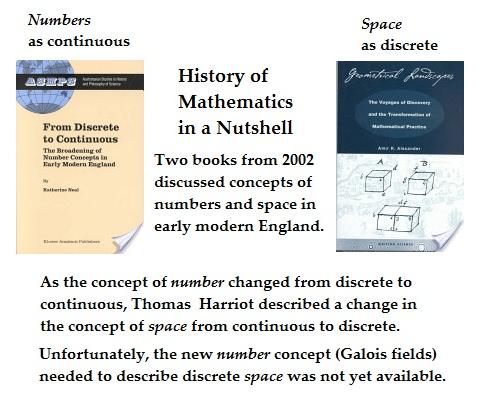




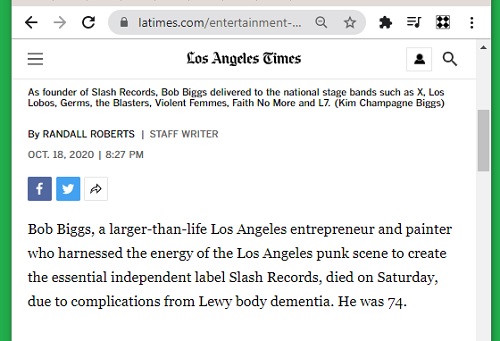










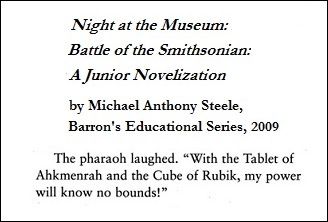
.jpg)







